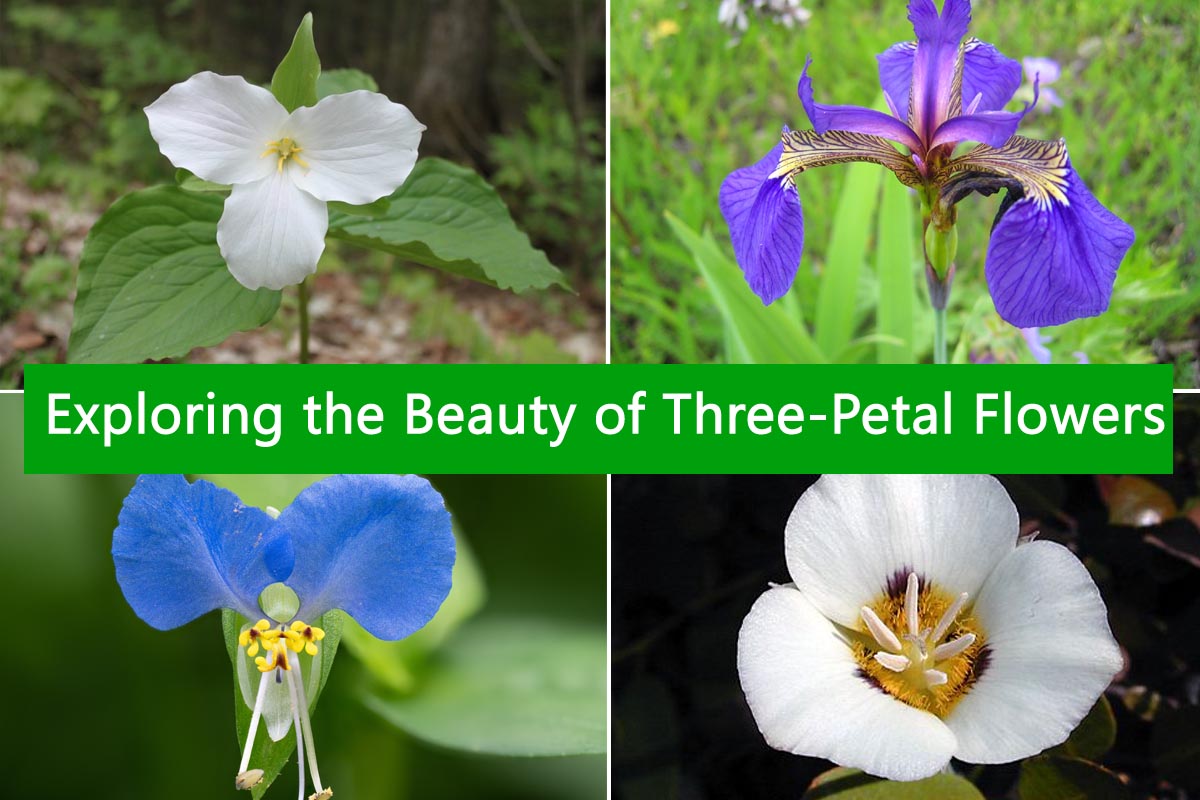
Exploring the Beauty of Three-Petal Flowers
In botany, the typical flower image is one with five or more petals. However, nature has delightful surprises, including the rare and unique three-petal flowers. These exquisite blooms may be less common, but they are no less captivating. In this blog, we’ll look closer at the beauty and wonder of three-petal flowers, their significance in nature, and some stunning examples that will leave you in awe.
Fascination of Three-Petal Flowers
Three-petal, known as “trimerous” flowers, deviate from the conventional floral structure. While most flowers display radial symmetry with an even number of petals (often in multiples of five or six), three-petal flowers break the mould with their distinct symmetry and elegance.
Also Read This : Sweet-Scented Thornless Roses: Fragrant Varieties with Minimal Thorns
Mystique of Odd Numbers
The occurrence of three petals in a flower is relatively rare, making it all the more intriguing. This rarity often draws the attention of botanists, gardeners, and nature enthusiasts. The simplicity and symmetry of the three petals create a sense of harmony and balance in the flower’s design, which can be deeply appealing.
Ecological Significance
Three-petal flowers have unique ecological adaptations. For instance, some three-petal flowers have evolved to attract specific pollinators, such as bees with shorter snouts, by providing easy access to nectar. The evolution of these flowers is a testament to the intricate dance between plants and pollinators.
Also Read This : Fleeting Beauty: The World’s Most Short-Lived Flowers
Extraordinary Examples of Three-Petal Flowers
Let’s delve into the enchanting world of three-petal flowers and explore some remarkable examples:
- Trillium
- Iris setosa
- Asiatic Dayflower- Commelina communis
- Mariposa Lily
- Daffodil – Narcissus pseudonarcissus
- Dutchman’s Breeches (Dicentra cucullaria)
Trillium
Trilliums are woodland wildflowers known for their three large, showy petals and distinctive, often mottled leaves. They come in various species and colours, including white, pink, and red.

Also Read This : Blossoming Diwali: Home Decoration Ideas with Flowers
Iris setosa
This unique iris variety boasts three broad, vibrant blue or purple petals with a striking yellow or white centre. It’s a true standout in the iris family.

Also Read This : Upcycling Magic: Transforming Plastic Bottles into Stunning Plant Pots for Home Decor
Asiatic Dayflower- Commelina communis
An annual weed plant native to East Asia and some parts of Southeast Asia typically reaches 1 to 3 feet. It produces a solitary flower with a diameter of about ½–1″, supported by a slender stem measuring 1-2″ in length. The flower features three petals, consisting of two prominent blue petals at the upper portion and a single white petal at the lower part. Notably, these delicate flowers have a very short lifespan, lasting only a day.

Also Read This : What are the plants that grow in water and are eaten as food?
Mariposa Lily
The Mariposa Lily encompasses a group of 28 species within the Calochortus genus, all of which are native to California and share a resemblance to tulips. These bulb plants typically attain a height ranging from 45 to 60 cm. Each flower emerges on a stem that grows from a bulb and features three distinctive, petal-like petals along with three sepals that resemble petals. These captivating flowers exhibit a range of colours, including white, pink, yellow, bluish, deep red, and even purple. They grace the landscape with their blooming beauty from April to June.

Also Read This : Guidelines for Successfully Transplanting a Rose Bush
Daffodil – Narcissus pseudonarcissus
The Daffodil, trumpet narcissus or common Daffodil, represents a group of perennial flowering plants native to Europe, with extensive cultivation in North America and Asia. This group comprises approximately 50 species and thousands of known cultivars and hybrids. Daffodils typically grow to a height of about 14 cm and produce 5 to 6 leaves that emerge from the bulb.
The flower’s intricate structure includes a disc-shaped corona at the centre, surrounded by a perianth. The perianth consists of three petals and three sepals. Daffodils exhibit a wide range of flower colours, with the most common being white and yellow. However, various cultivars can produce flowers with red, pink, or orange coronas.

Also Read This : Blossoming Beauty: Must-Visit Flower Valleys in India
Dutchman’s Breeches (Dicentra cucullaria)
These charming wildflowers resemble little pantaloons, with their clusters of dainty, white, and pink flowers, each featuring three petals.

Also Read This : Elevate Your Decor: The Best Tall Houseplants with Stunning Patterns
Appreciating the Unconventional
The beauty of three-petal flowers lies not only in their rarity but in their unique appeal. These blooms may be less common, but they are no less striking, and their role in nature’s intricate web is a testament to the diversity of life on our planet. The next time you come across a three-petal flower, take a moment to appreciate the elegance, simplicity, and ecological significance of these extraordinary blossoms. They are a reminder that beauty can be found in the most unexpected and unconventional places in the natural world.
Also Read This : Exploring the Beauty of Nature: Plants That Produce Flowers With 5 Petals




